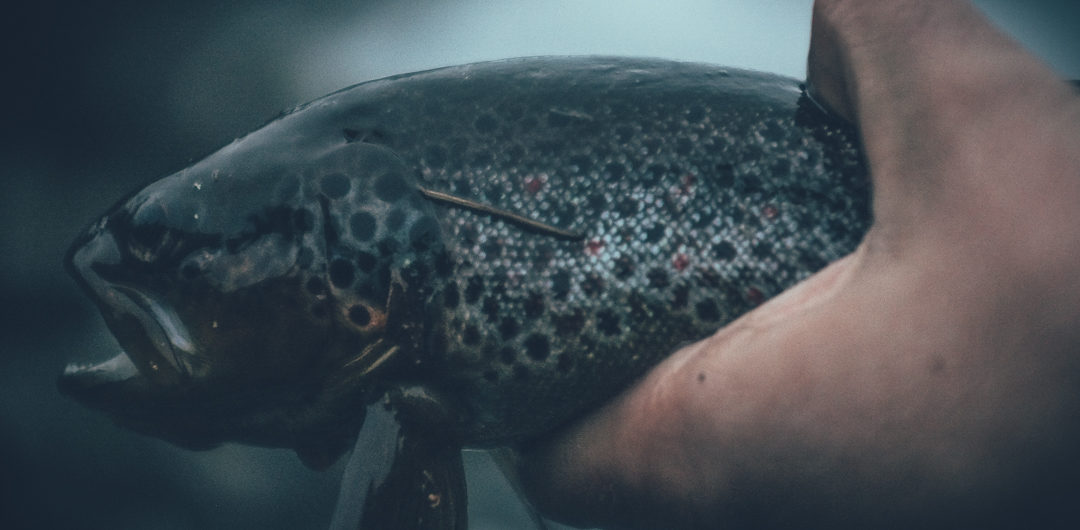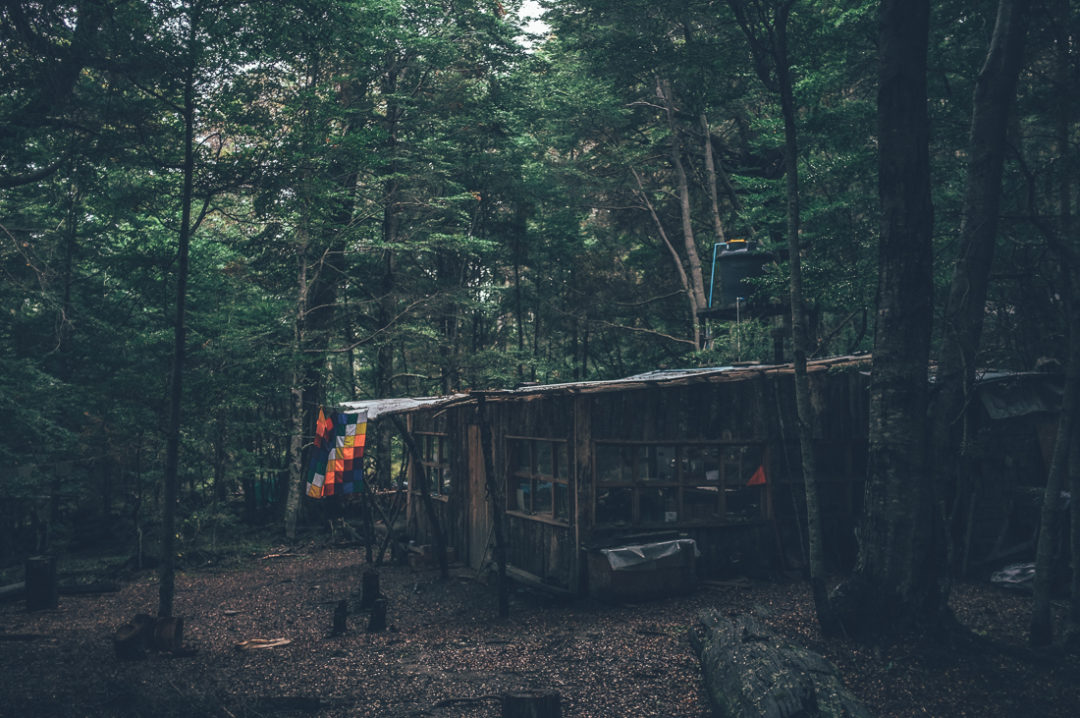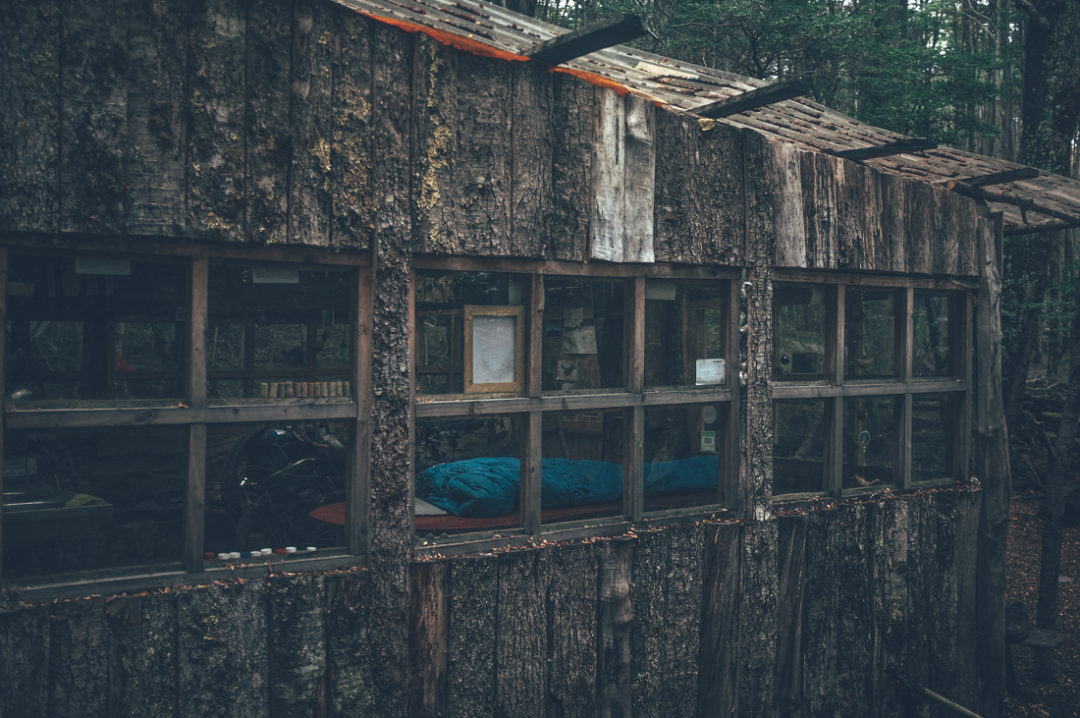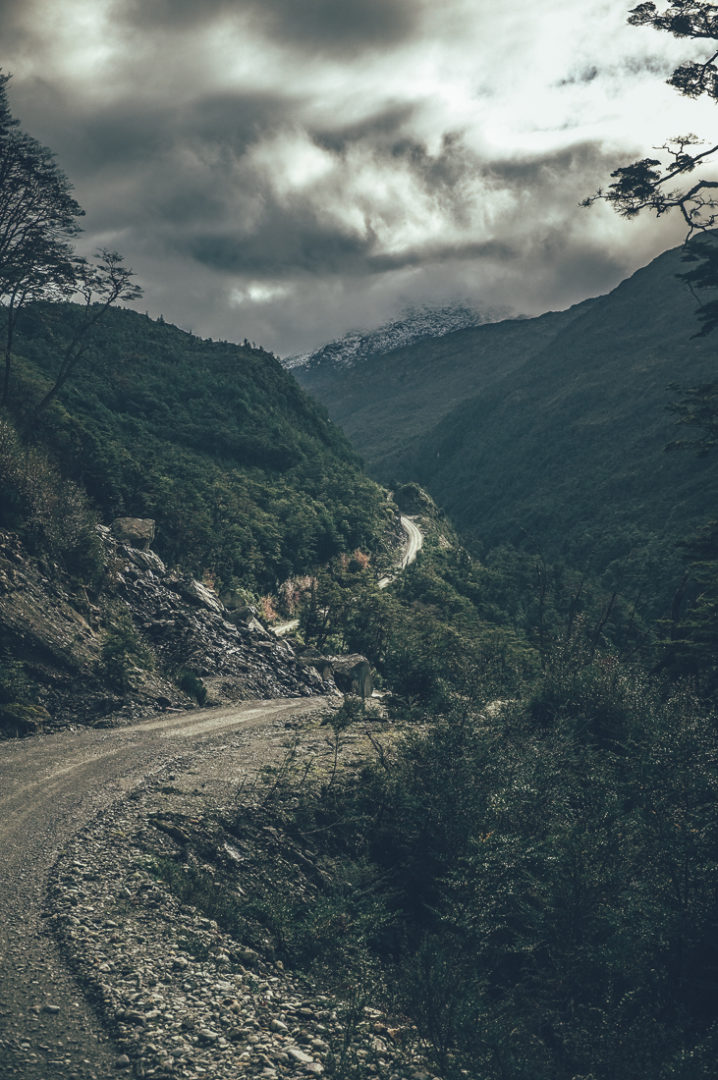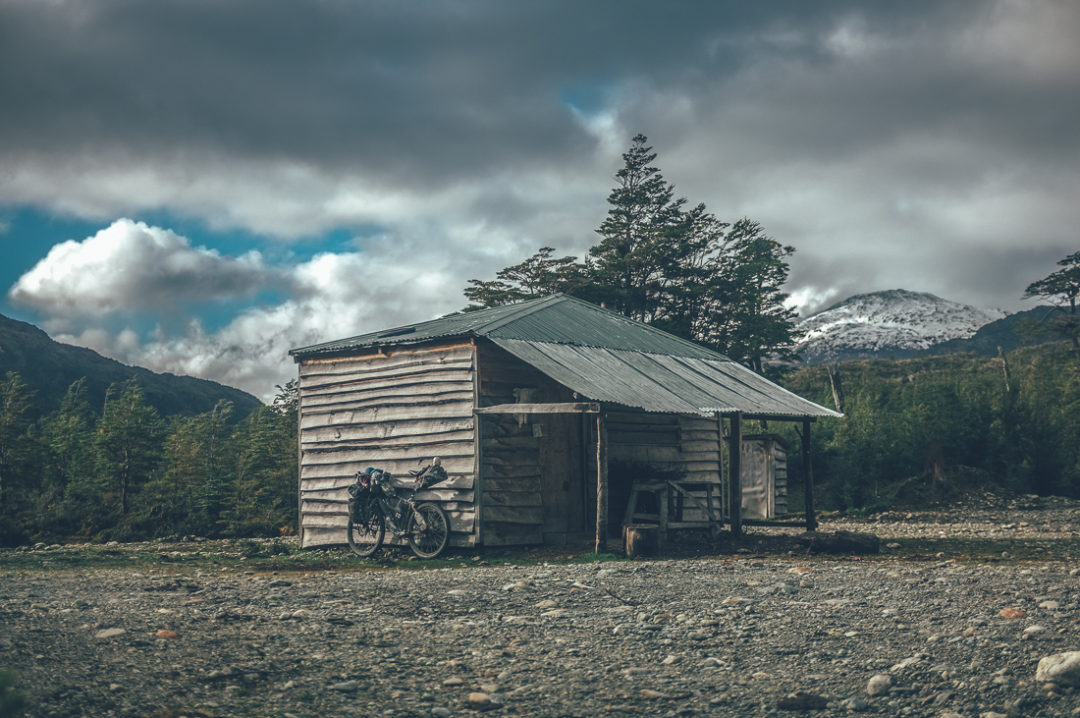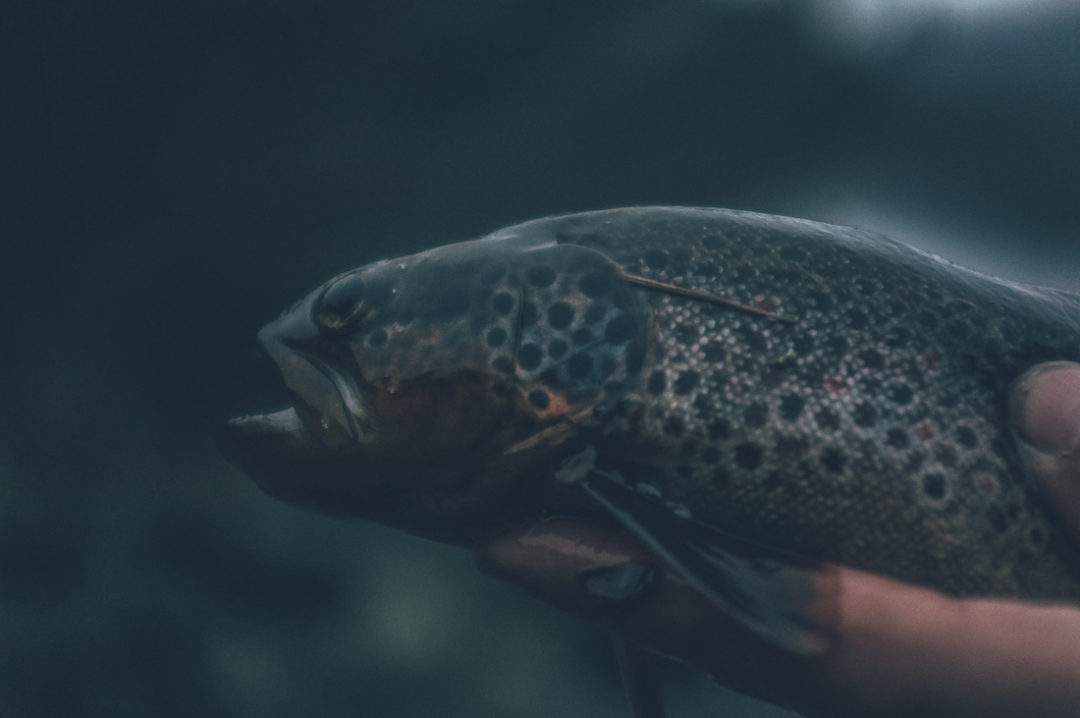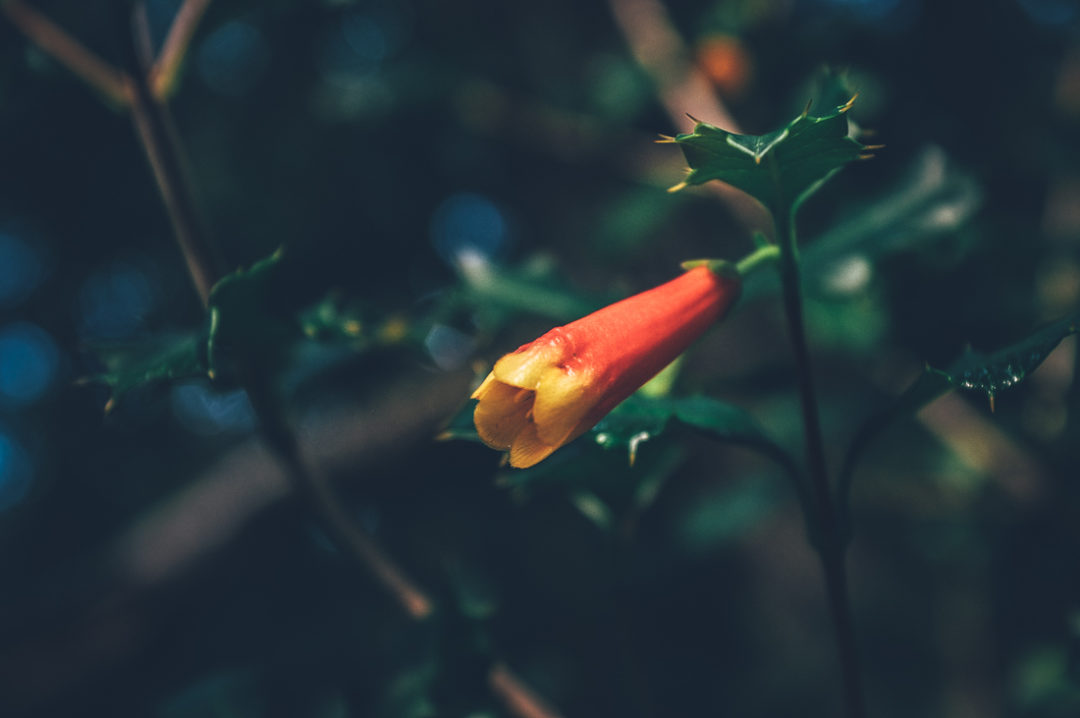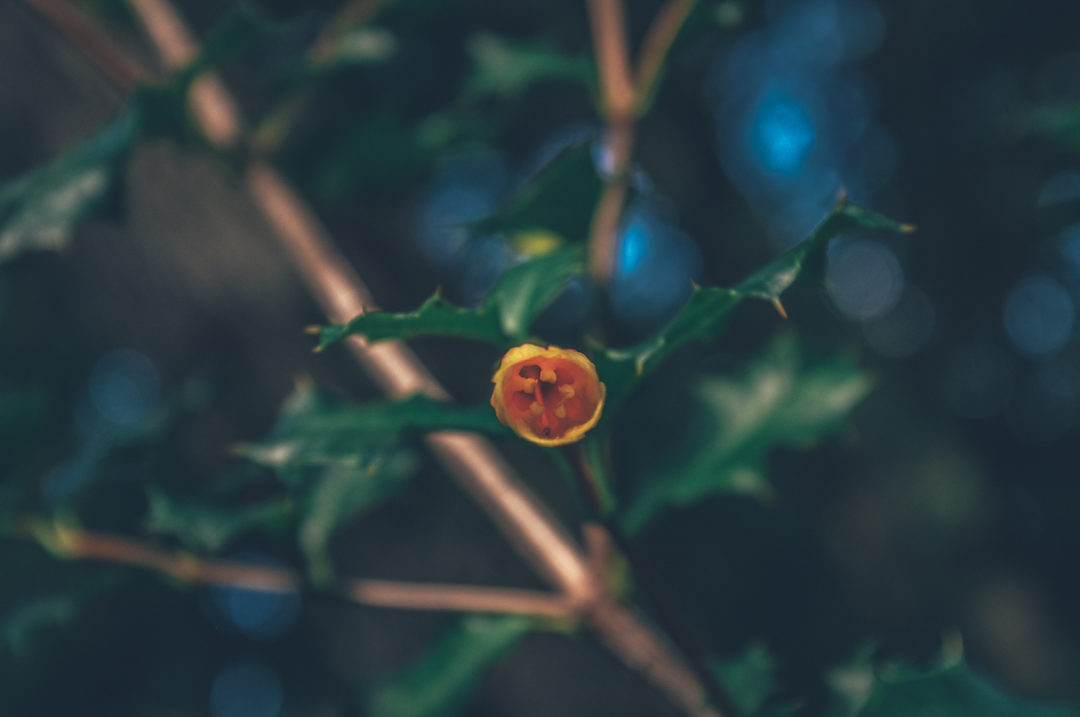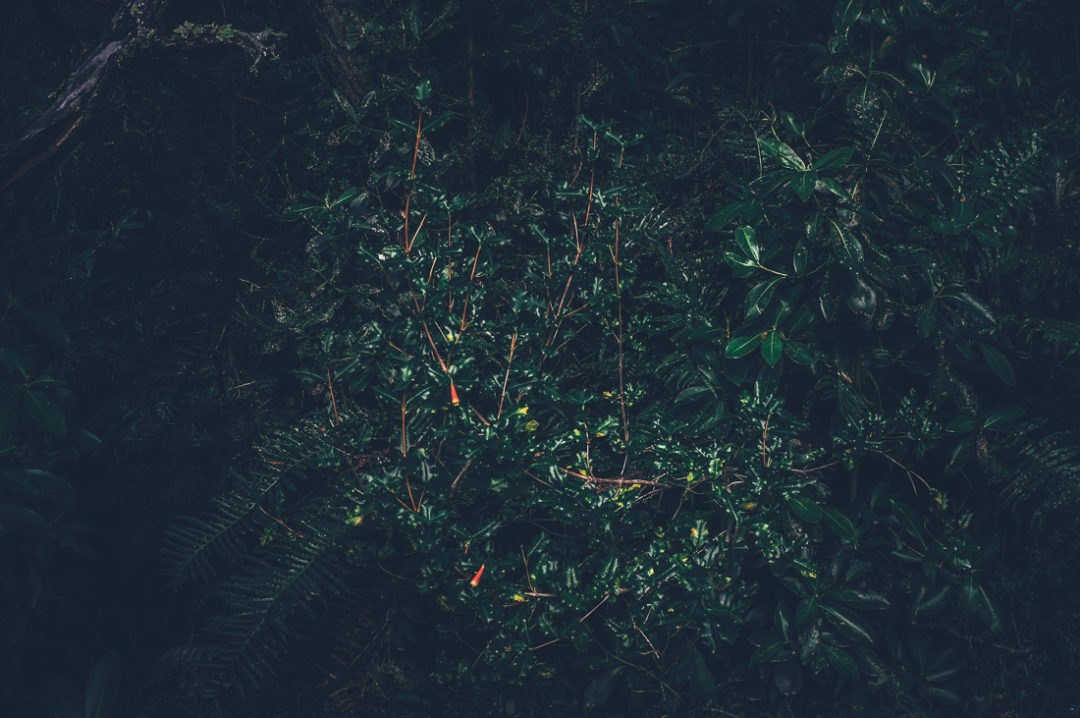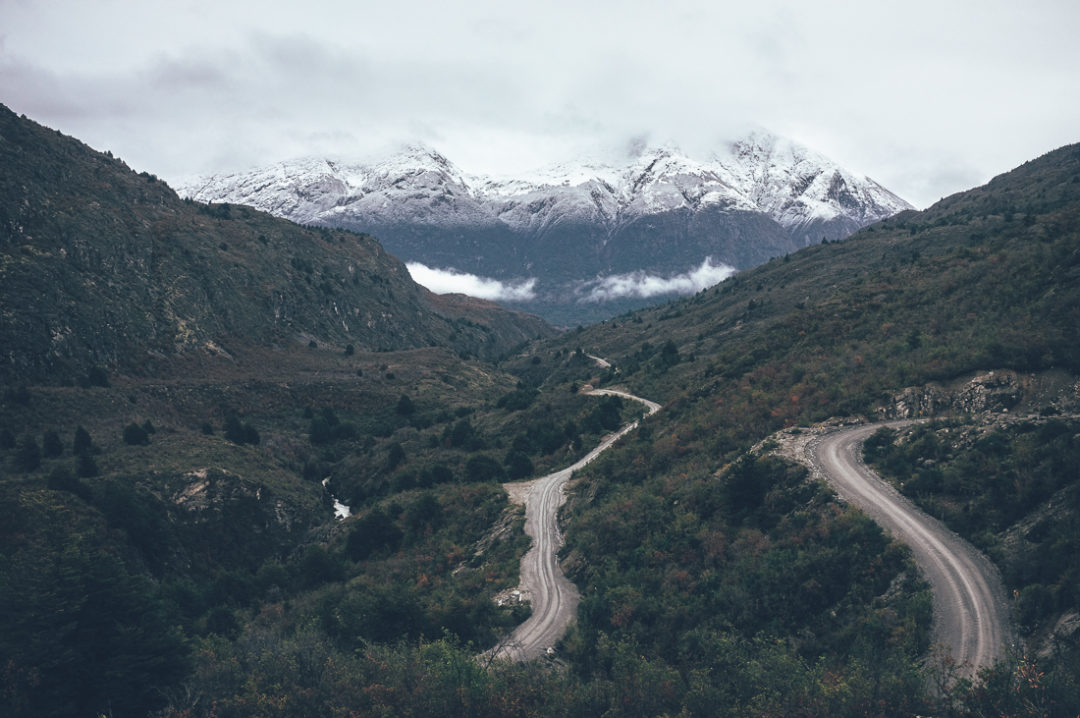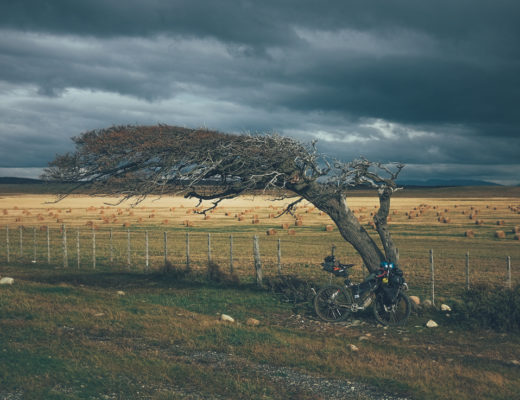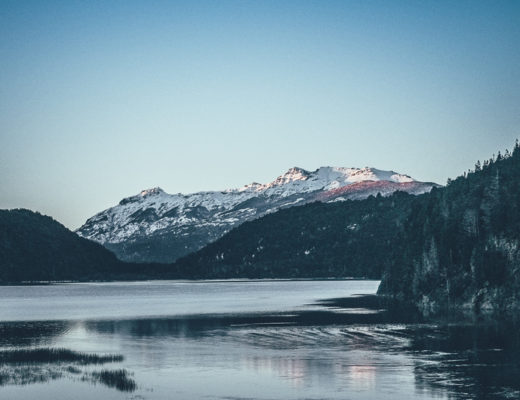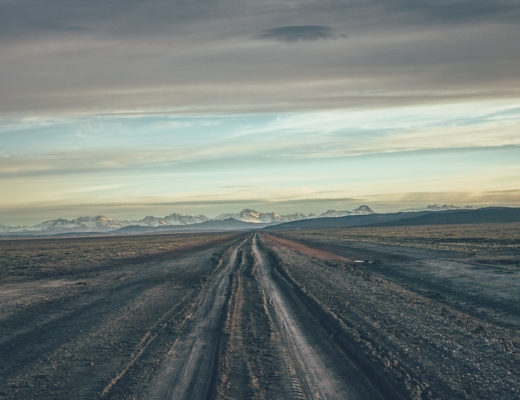After making it across Rio Paso Mayer the plan was to stock up food, get more cash and use wifi in Villa O’Higgins. Despite the off season, I assumed that the village would be somewhat lively, as I had heard so much of it. I was completely wrong, it reminded me more of a ghost town. No money, no wifi, no hospedaje and no food seemed to be the deal with this tourist attraction off-season. At least I had my fly fishing rod, so I would not end up starving riding north.
When I arrived the streets were empty apart from a couple of kids in the village square. Most of the houses were dark, no smoke coming out of the chimneys. Everything in the village was closed, including the grocery stores. The free wifi on the village square was not working and the only other wifi I managed to find was in the library, which was not working either. I also realised that there is no bank, which would simplify my diet further. I asked the few people I found in the village if I could buy food anywhere around, but people doubted it. It was Sunday and Chile is a Catholic country. Everything would be closed today, except churches. I remembered being in a similar situation in Germany, where Sunday closing caught me unprepared. At least I had my fishing rod and prospects of fishing were excellent in the area.
The wind picked up and it started to rain. On my third circuit of the town trying to find any place to sell me food, I was flagged down by a tall, older man. He was a retired Columbian who was now backpacking in Patagonia. He had hitchhiked to Villa O’Higgins on the same day and spent a couple of hours in the village looking for a place to sleep. As all the hospedajes were closed he was now hosted by a random local woman. I was invited in for a tea. A bakery with some basic groceries would open at 7pm, I was told, and we had a couple of hours to chat before I could finally stock up food for the following 200km and ride out from the village to look for a place to camp for the night. There would have been a bed to sleep in in the house for me as well, but a hefty price tag of 20USD a night with breakfast was more than I had for food for the following week.
When I finally set off into the night my panniers filled with pasta, rice and cheap cookies, a full on storm had started. Heavy rain and strong gusty winds made the decision to sneak into a closed campsite just outside the village easy. There was a drawing of a bicycle on the sign, which I thought would decrease the penalty if getting caught on private land. I pushed my bike up a muddy hill where a dozen camping platforms and compost toilets stood. There was also a kitchen building, where I ended up sleeping the night on the table.
The campsite was built in a beautiful old forest, apparently using only recycled and other local materials. Inside the kitchen was an old bicycle connected to a generator connected to and charging an old car battery. The water boiler above the stove was covered with stickers of previous big cycling trips. The Big Trip sticker stood out in the mosaic for me. Swedes Emil Börner and Johanna Eklöf had both been here, before Johanna’s tragically fatal accident in Brazil in 2015. A drawing made by her on the wall told me how this place would be on season. Happy cyclists and backpackers, trekking in the surrounding mountains, fishing in the river, ecological values in action and economic flexibility; you pay what you can. Looking at the drawing brought tears into my eyes. Why those who had been brave enough to realise their dreams were punish in the most brutal way? One by death and one by loosing a loved one. I had been in a hostel in Dushanbe, Tajikistan, when I had heard the news. Now, two years later, I was following their tyre tracks, imaging where they have slept, where they have cooked their breakfast, which sceneries had made them to stop.
Off season most of the services in the lower Carretera Austral seemed to be closed, which offered me some peaceful places to escape the rain and wind.
By early afternoon the rain has stopped and I started on the Carretera Austral. The road went through steep woods along lakesides, every now and then steeply climbing a couple of hundred metres to a pass and then declining steeply down to the next valley. I passed numerous small glaciers and snowy mountain tops shined bright turquoise in the sun. During four hours on the bike I saw only two cars and two gauchos. The first cowboy seemed pleased to meet a cyclist and told me, sitting on his horse, that the last cyclists he saw passed weeks ago. His three dogs jumped against my bike, apparently having learned that a cyclist is a friend. He was looking for his cows, which I told him were 5km away beside the road.
Carretera Austral close to Villa O’Higgins.
The second gaucho was equally keen to stop for a chat and told me that there was a refugio (wilderness hut), where I could spend the night. There was still plenty of day light left, so I doubted that I would sleep there, but thanked for the tip and wished him ‘suerte’, good luck. Once I reached the cabin I decided to stay there even though it cut the cycling day a little short. Roof over my head, a sleeping platform and a fireplace. Why not? The walls were covered with tags of other cyclists. The most recent note was dated four weeks earlier.
A roof over my head, sleeping platform and a fireplace. That is what a cyclist’s luxury is made of!
One kilometre north of the cabin was a small waterfall and a pond, where I headed to get fresh water for the night and the following morning. While filling my water bottles and water bladders I scanned the pond for fish. The pond, as well as the color of the water, reminded me of Finnish Lapland. A pond like that, connected to multiple small rivers could have a lot of trout. I rigged my fly rod, lazily chose a fly which imitates simultaneously nothing and everything, and made a cast. On the third cast I had a fish on. I soon lost it but quickly had it hooked again. A beautiful 35-40cm brown trout was the third fish caught in the Andes for me. Would fishing be this easy and good here onwards? I cooked the trout for three hours on a platform I built into the fireplace of the refugio. It tasted wonderful, the thinner parts of the meat slightly crispy, salty and smoky and the thicker back tender and still juicy. I rarely eat my catch, but this time I felt that I had my excuse: only food I had afforded to buy in Villa O’Higgins was rice, pasta and vegetable oil. Fish was a welcome addition to my diet.
A brown trout, first of many I caught during my first week on Carretera Austral.
The following morning I realised I could see three different glaciers from the cabin. A condor flew over the glacier closest to me and landed in a tree below the snow line. Before setting off I carved my own tag on the wall:
Dia 946 en bici, viajando norte, no cyclistas por un mes. Frio pero bonita. Taneli, 17.5.2017
Beyond the cabin , the road crossed turquoise and silvery rivers in every valley. And wherever there was a pool, there was my fly. And where was my fly, there was a trout. During my first week on Carretera Austral I caught brown trout, rainbow trout and one large silvery sea run brown trout. Every river and pool I spotted from the road proved to be worth a stop and I barely covered 20km a day, cycling from river to river, pool to pool. If I had dreamed of bikefishing back in 2014 when set off to explore the world with a fly-fishing rod in my pack, this was it. I spent a full week cycling 200 kilometres from Villa O’Higgins to Cochrane. Only running out of rice and pasta forced me to continue north.
The variety of nature was stunning during my first week from Villa O’Higgins. Every forest and valley seemed different compared to the previous one. Occasionally the nature reminded me of Nordic woodlands, at other moments of jungles in the hills of China. I saw bamboo and flowers for the first time since leaving Asia. One morning I was woken by a sound that like the buzz of a giant bumble bee. When I crawled out of my tent, a 5 cm colibri (hummingbird) came from the bush. It hovered for a moment two metres away, then with sharp precise movements flew past me into the woods behind my tent. My campsite was surrounded by flowers, which by the shape and size would be a perfect match for the length of the peak of my little flying neighbour.
My campsite by the Rio Brave was surrounded by beautiful flowers and birds.
The 220km of Carretera Austral from Villa O’Higgins was one of the most beautiful and interesting roads I have ridden so far. I was passed by only a handful of cars each day, most of the time I had the road just for myself. Most of the time I kept my camera in my bag, as I knew that I could not capture the beauty around me with my 35mm or 50mm lens anyway in the steep, shady valleys. More than ever I missed my Voigtländer Bessa L with 15mm wide angle, which I used for landscape photography back at home. The following photo was nothing compared to what I saw, but is one of the few landscape pictures I have from the section.
On the last pass before the town of Cochrane.
The Route
Nearly all the way from Villa O’Higgins to Cochrane the road was rough and soft. I rode with fairly low tire pressures the whole way with my 2.5’s. Some road sections were freshly rebuilt after landslides and many sections were newly surfaced with coarse gravel. I guess in the tourist season the road is more hard packed and then much smoother as well. The road is narrow and I suppose it could be dangerous to cycle on season. Numerous blind corners, steep climbs and downhills could make the section of the Carretera Austral from Villa O’Higgins to Cochrane dangerous to ride in season with heavy traffic.

